







Italy’s history of innovation goes beyond ancient Rome’s roads, baths, and cuisine. Italians pioneered game-changing inventions like the battery, eyeglasses, the modern banking system, and even the espresso machine.
In this article, we’ll review 27 groundbreaking Italian inventions and inventors who changed the world. Students can learn more about the history of Italy on an international service trip for teens.
No time to read everything? Click here to view the summarized list of inventions.
Roman law is not technically an Italian invention but is the foundation of many legal systems in Europe and around the world. Roman law originated in ancient Rome and was developed over more than a thousand years, from the founding of Rome in 753 BCE to the fall of the Western Roman Empire in 476 CE.
This legal tradition gave rise to key concepts in contract law, property law, and family law that are still in use today. Roman law emphasized the idea of civil law, where written codes and statutes govern, in contrast to common law, which relies more on judicial precedents. The principles established by Roman law continue to shape legal thought and practice across Italy and the world.
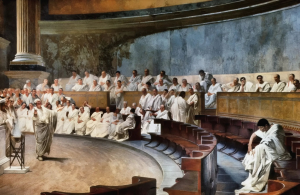
The invention of Roman Law. Photo by Cesare Maccari, Public domain, via Wikimedia Commons
The English word “quarantine” comes from Venice during the Bubonic Plague. Ships were required to anchor offshore for 40 days to prevent the spread of the disease. Fun fact: Quaranta is the Italian word for forty.
Not all life-changing inventions need to be heavy. The fork might be the most important Italian innovation on our list. Italy didn’t even invent the fork; the nation just played a big role in its popularization. Forks were used in upper class Italy before spreading to the rest of Europe. This utensil was particularly useful for spearing and twirling spaghetti. Rejoice pasta eaters and enjoy your travel to Italy!
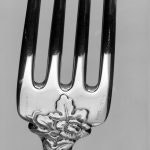
Tiffany & Co., CC0, via Wikimedia Commons
Without Giovanni Bicci de Medici and others of his era, the foundations of modern banking, and by extension, financial tools like CashApp, figures like Jamie Dimon, and the decentralized creator economy, might not exist. The Medici Bank was a financial institution created by the Medici family in Italy during the 15th century. It wasn’t the oldest bank but was the largest in Europe during its heyday. Medici Bank and the other early banks helped shape society and drove the expansion of Italian city-states during the Middle Ages.
In those times, money changers in Italy conducted their business at benches or tables in marketplaces. The Italian word “banco” originally referred to these benches. Over time, “banco” developed into “banca,” and then bank, representing the financial institution itself, not just the physical table.
Visit Italy with Rustic Pathways. Get a few surprises along the way.

Workshop of Bronzino, Public domain, via Wikimedia Commons
The first pair of eyeglasses was invented in Italy in the late 13th century in Pisa or Florence. Who would have thought the best Italian invention of the Middle Ages would be to help the middle aged?
One of the top Italian inventions of all time: eyeglasses courtesy of Metropolitan Museum of Art, CC0, via Wikimedia Commons
Leonardo da Vinci was an Italian inventor, scientist, polymath, artist and theorist. He invented the barreled cannon (a precursor to automatic weapons) and developed a prototype for a helicopter, the anemometer for measuring wind speed and direction, the revolving bridge, a winged flying machine, specialty diving equipment, a self-propelled cart, and the parachute.
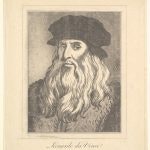
Master of Italian inventions, Leonardo da Vinci, CC0, via Wikimedia Commons
Galileo Galilei invented the thermoscope, an instrument that indicated temperature differences and laid the foundation for the development of the thermometer by Venetian scientist Santorio Santorio.
Galileo is best known for his radical assertion that the Earth revolves around the Sun. This idea led to his imprisonment by the Catholic Church. The Church formally apologized for this action in 1992.
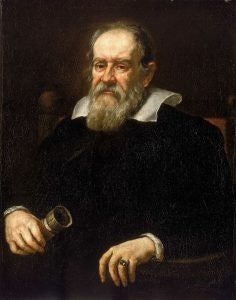
Justus Sustermans, Public domain, via Wikimedia Commons
The government of Venice published the notizie scritte, monthly handwritten newsletters of current events sold for one gazetta, a small coin. From this, we get the association of the words newspaper and gazette.
The Teatro San Cassiano was the world’s first public opera house inaugurated as such in 1637 in Venice.

Secchi Smith, ©Teatro San Cassiano Ltd, CC BY-SA 4.0 <https://creativecommons.org/licenses/by-sa/4.0>, via Wikimedia Commons
Il Ridotto means The Private Room. The casino was a wing of Venice’s Palazzo Dandolo. It was opened by Venice’s city leaders as a government-owned casino.
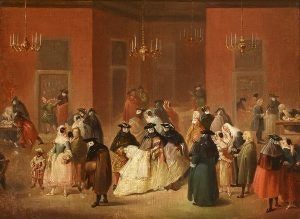
Il Ridotto – Europe’s first casino, amongst the most illicit of Italian inventions
Evangelista Torricelli was an Italian physicist and mathematician. He invented the barometer in 1643, a breakthrough that provided crucial insights into atmospheric pressure and laid the foundation for meteorology.
Torricelli’s experiments demonstrated that air has weight and that atmospheric pressure decreases with altitude. Without Italian inventions, we don’t have weathermen and airplanes.
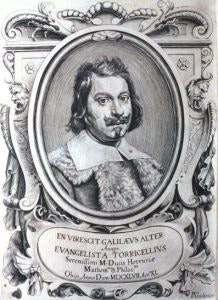
Evangelista Torricelli – Italian inventor of the barometer, father of weathermen
Italian inventor and chef Procopio Cutò made modern gelato. He opened a café in Paris called Café Procope in 1686 that served a new style of ice cream, which was smoother and creamier than the frozen desserts before.
Procopio’s gelato involved blending fruit juices with sugar and ice, then using an ice cream churn to create a texture similar to modern gelato.

Francesco Procopio dei Coltelli, also known as Procopio Cutò, the father of gelato, the best Italian invention on our list
Bartolomeo Cristofori was an Italian inventor and instrument maker who invented the first modern piano, around 1709. Many musical instruments were invented in Italy.
Born in Padua in 1655, Cristofori initially worked as a harpsichord maker but sought to create an instrument that could offer more dynamic control over volume, something the harpsichord could not do.
Cristofori’s piano allowed musicians to vary the volume of the sound by controlling the force with which the keys were struck. This was achieved through a mechanism where the hammer struck the strings and then retracted, allowing for more musical expression and range than on the harpsichord, a keyboard instrument.
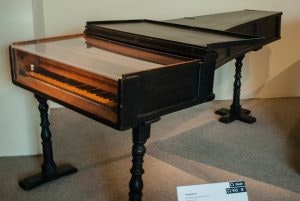
The Italian invention of the proto piano. Photo by Shriram Rajagopalan, CC BY 2.0 <https://creativecommons.org/licenses/by/2.0>, via Wikimedia Commons
Alessandro Volta was an Italian physicist and chemist, best known for inventing the electric battery, known as the “Voltaic pile,” in 1800. This groundbreaking voltaic pile invention provided the first continuous source of electricity, revolutionizing electrical science.
In recognition of his contributions, the volt, a unit of electric potential was named in his honor.
Antonio Meucci was an Italian inventor that developed an early version of the telephone in 1871. Due to financial constraints, he couldn’t secure a full patent and never commercialised his invention. Historians continue to debate his role in the invention of the telephone.
Tell Alexander Graham Bell to come at me.

Inventor Antonio Meucci – The real telephone pioneer
Giuseppe Ravizza was an Italian inventor credited with creating an early variation of the typewriter, which he called the “Cembalo scrivano” or “writing harpsichord.”
He began working on his invention in the 1840s and continued to refine it over several decades, with the notable version being completed around 1855.
Angelo Moriondo was an Italian inventor credited with patenting the earliest known espresso machine in 1884. His machine used steam and boiling water to brew coffee. His invention was showcased at the Turin General Exposition that same year. Moriondo’s invention, described as “new steam machinery for the economic and instantaneous confection of coffee beverage.” Later his invention was improved upon by Milanese mechanic Luigi Bezzera.
The significance of coffee in Italy is VENTI, with the invention of the espresso machine a testament to Italy’s connection to coffee. Italian’s hold coffee dear and espresso is the defining symbol of Italian coffee culture.
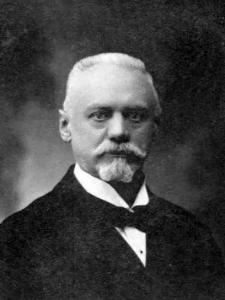
Angelo Moriondo – Italian inventor, espresso genius
Guglielmo Marconi was an Italian inventor and engineer who transmitted the first transatlantic radio signal in 1901. In 1909, Marconi won the Nobel Prize in Physics. Without Marconi, his first transmission across an ocean, and his work on radio waves, we don’t have Wi-Fi.
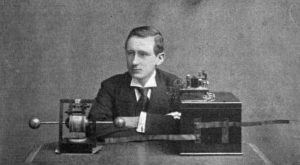
Italian inventor and his wireless apparatus
Amerigo Cei-Rigotti invented the Cei-Rigotti automatic rifle, the first fully automatic rifles ever created. The rifle was gas powered, but never put into production by the Italian army. An automated gun is a surprising invention from a frontline soldier.
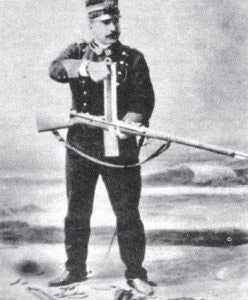
Cei-Rigotti demonstration of an Italian invention
Enrico Fermi developed the first nuclear reactor, key in the development of the first atomic bomb. Fermi was an Italian American physicist who created the world’s first nuclear reactor and is considered one of the key figures in the development of quantum theory and nuclear physics. He was awarded the Nobel Prize in Physics in 1938 for his work on induced radioactivity and the discovery of transuranic elements.
Visit Italy with Rustic Pathways
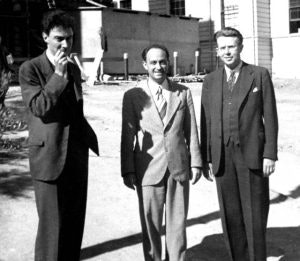
Oppenheimer Fermi Lawrence. Nuclear leaders
Emilio Segrè won the Nobel Prize in 1959, along with Owen Chamberlain for the discovery of the antiproton, a subatomic antiparticle with the same mass as a proton but the opposite charge.
Segrè was head of the Manhattan Project’s Radioactivity Group contributing to the study of fission and the behavior of radioactive materials.
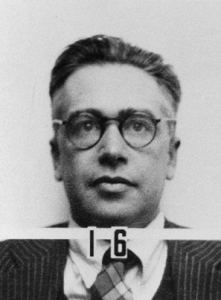
Italian physicist and Nobel laureate Emilio Segre
Piero Puricelli was an Italian engineer and entrepreneur who built the first toll road in the world. The “Autostrada dei Laghi” was a controlled access highway that connected two cities in the Italian North, Milan and Varese. His work set the standard for highways in Europe and around the world.
Pier Giorgio Perotto was an Italian inventor and electrical engineer. While working for the Italian company Olivetti, he led the design team that developed the Programma 101, one of the first programmable calculators in the world. The Programma 101 revolutionized computing by making it more accessible to a wider audience, later paving the way for the development of personal computers.
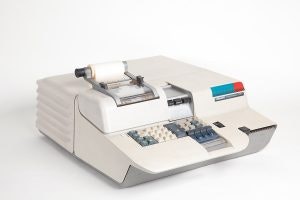
Museo della Scienza e della Tecnologia Leonardo da Vinci”, CC BY-SA 4.0, via Wikimedia Commons
Nobody says whirlpool bath; everyone knows the name Jacuzzi. Candido Jacuzzi was an Italian American inventor who created the whirlpool bath, better known as Jacuzzi to help his son with his rheumatoid arthritis.
The original pump was a portable device that could be placed in a bathtub to create a therapeutic whirlpool effect, providing relief from pain and improving circulation.

Candido Jacuzzi’s great invention photo credit to Petr Kratochvil, CC0, via Wikimedia Commons
Modern liposuction is credited to a father-son inventor team of Italian doctors Arpad and Giorgio Fischer. The Fischers invented a hollow surgical instrument called a cannula that allowed them to create tunnels between major blood vessels of the body while sucking out fat. Until Ozempic, this was Hollywood’s best bet.
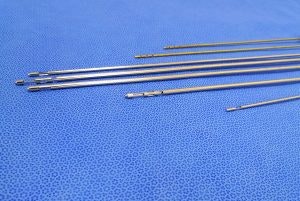
Arpad and Giorgio Fischer were the Italian father and son duo who created liposuction in 1974
Federico Faggin is an Italian American engineer and entrepreneur. Faggin led the design and development of the Intel 4004 Microprocessor, the world’s first commercial microchip that laid the foundation for the modern computing era.
The 4004 was the first time a central processing unit (CPU) was put on a single chip. Later, Faggin founded Synaptics, a company that pioneered the development of the touchpad.
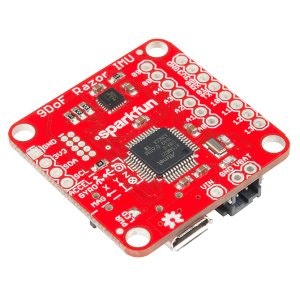
SparkFun, CC BY 2.0, via Wikimedia Commons
MOSE Project is an Italian invention to protect Venice from flooding. MOSE is an acronym that stands for Modulo Sperimentale Elettromeccanico, the Experimental Electromechanical Module.
MOSE Project is a series of barriers to block high tides that flood Venice and prevent damage from rising sea levels. It’s the most complex flood defense system in the world and has real promise to protect ancient ruins in Venice from the effects of climate change.

Flooded Venice, Italy
Read More: The Best Things to Do in Italy
💡 Want more trivia?
Browse all Fun Facts articles.